Ireland’s second largest city, Cork has a lot to offer. There are charming parks, beautiful buildings packed with history, and lots of street art and shopping. In just a few minutes, you can reach several inviting towns with their own major attractions to enjoy. From exploring castles and forts to browsing markets and seeing movies in a converted church, here’s a look at some of the best things to do in Cork.
Shop at the historic English Market
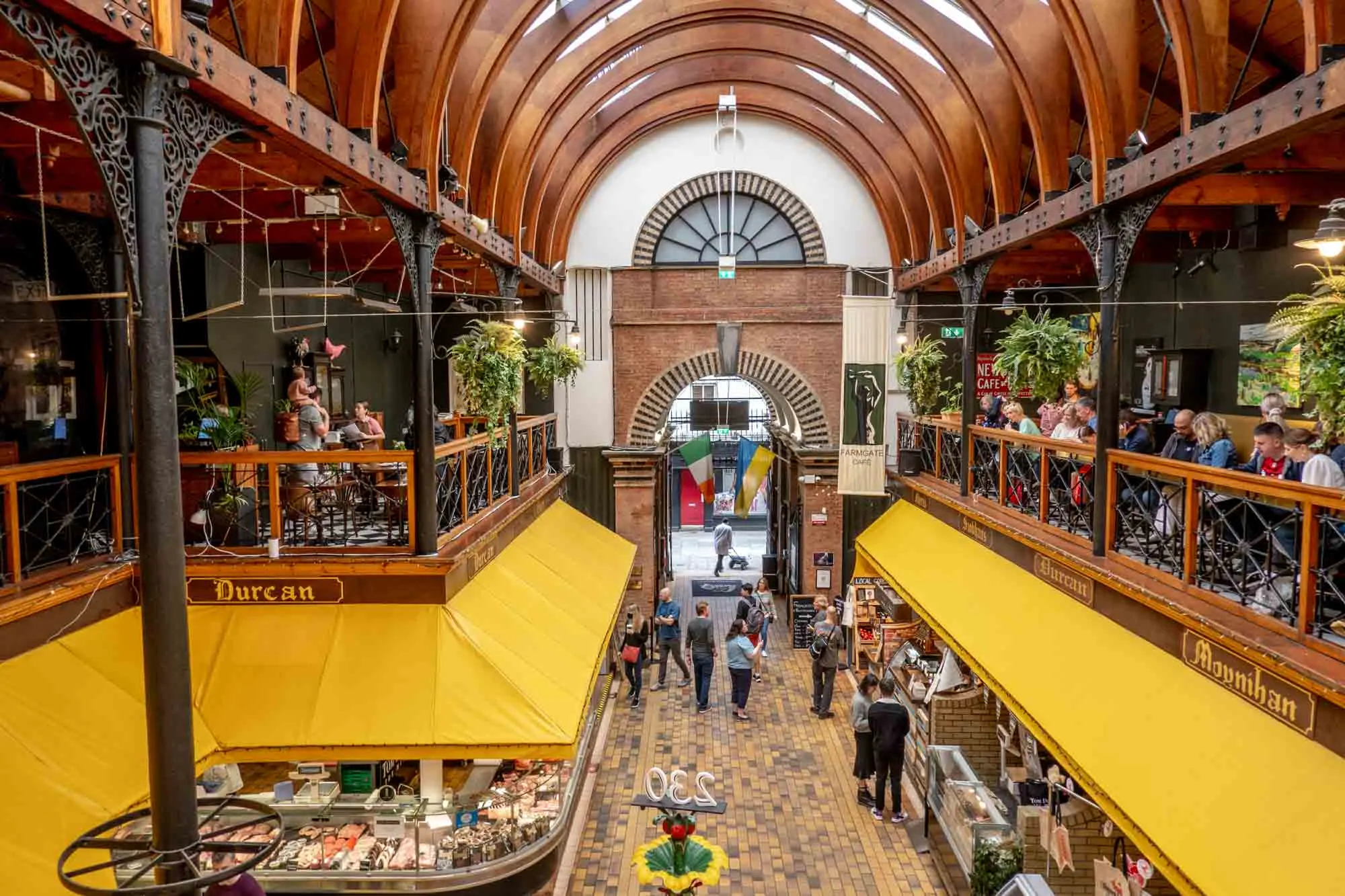
The English Market has been an important part of life in the city since 1788. It is packed with fruits, vegetables, meats, and specialty items from across Ireland and around the world. One of the oldest covered markets in Europe, it houses newer businesses alongside vendors who have sold their wares here for over a century.
Take a break in the market to see its unique cast iron fountain, to browse the pastries, cheeses, and spices, or to pull up a seat at one of the on-site restaurants and cafes. We loved having breakfast at the Farmgate Café, which makes a great start to a day downtown.
Stroll in Fitzgerald’s Park
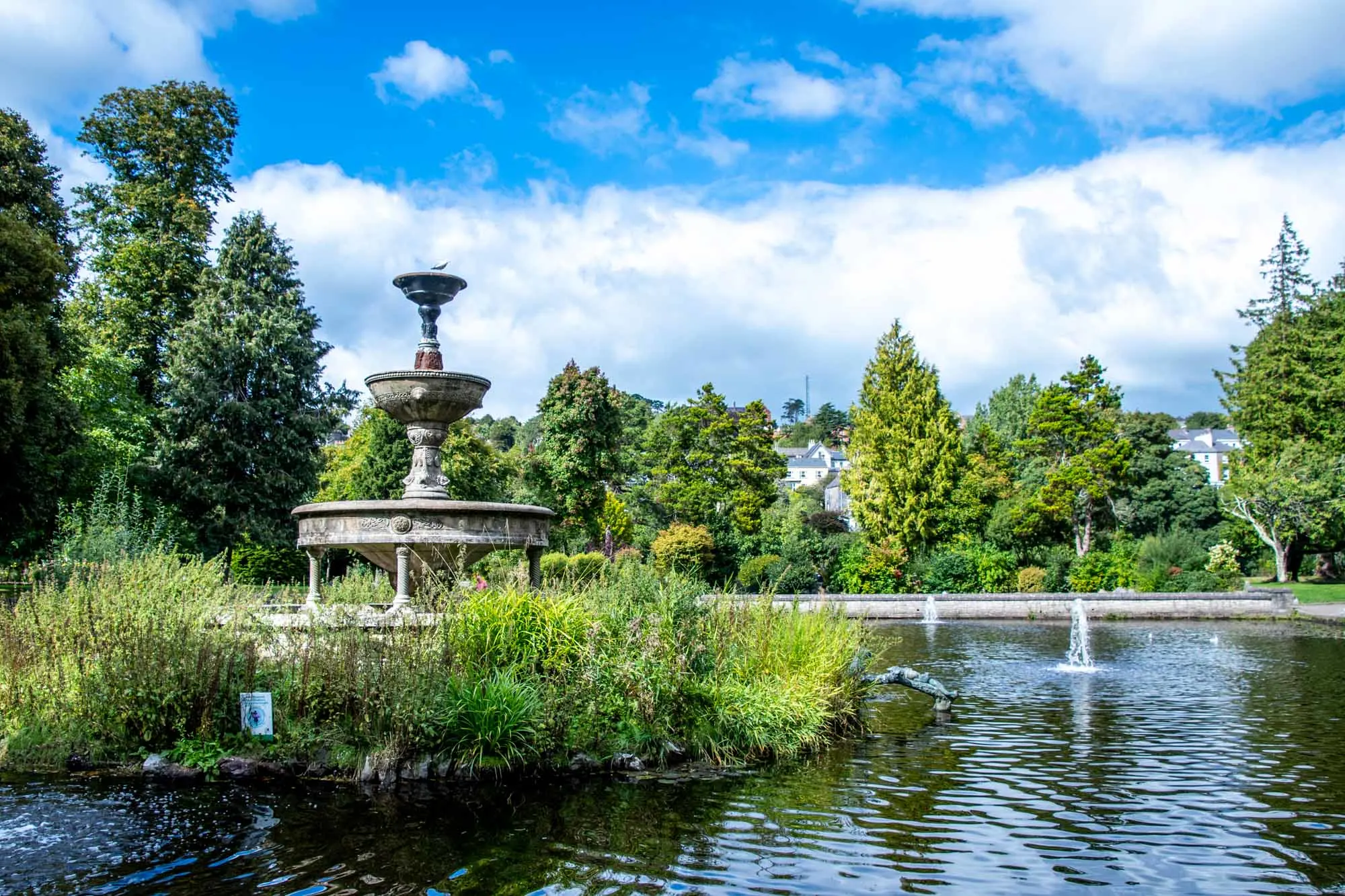
If you’re wondering what to do in Cork outdoors, head to Fitzgerald’s Park on the banks of the River Lee. The 18-acre park dates from 1902 when it was built in preparation for the Cork International Exhibition. Several original features still exist, including the decorative fountain and the pavilion.
The park has plenty of open space as well as a playground, a waterlily-filled duck pond, formal gardens, sculptures, and the Cork Public Museum. Daly’s Bridge—a cast iron suspension footbridge—allows visitors to cross the river. Just a few steps on it will make it clear why the structure is known locally as “Shakey Bridge.”
Tour Cork City Gaol
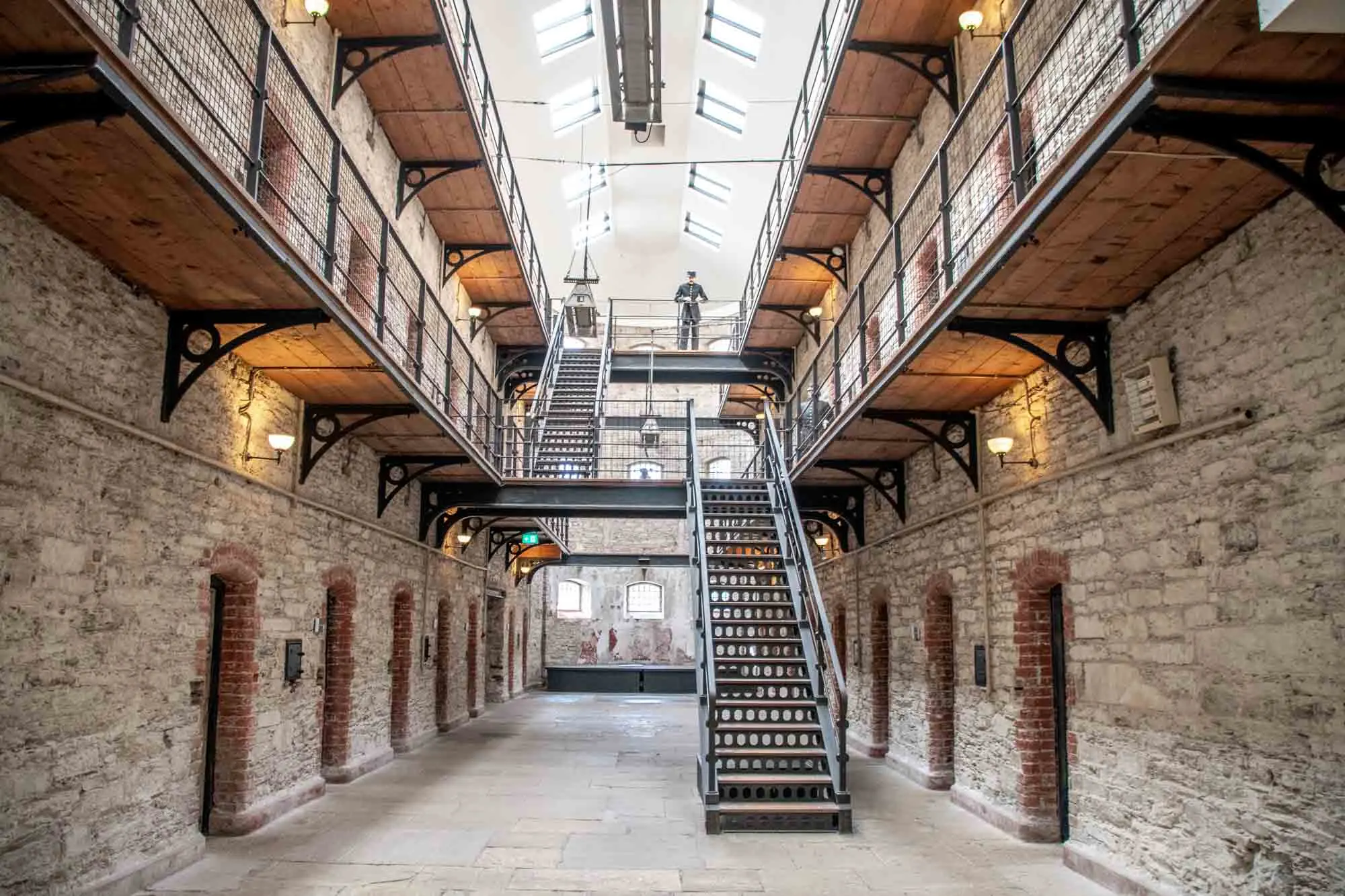
Stepping onto the grounds of Cork City Gaol feels more like walking up to a castle than a 200-year-old prison. During the 99 years this unique building was in operation, thousands of men and women occupied its cells for a range a crimes from public drunkenness to fighting for the independence of Northern Ireland.
Cork City Gaol, which has not housed inmates since 1923, is now a museum and a top Cork attraction. Its rooms and cells feature life-size representations of daily life in prison and stories from the lives of those incarcerated there. While the stories here are not as dramatic as in similar institutions like Dublin’s Kilmainham Gaol, a visit and audio tour here show a unique snapshot in time of prison life in the 1800s and early 1900s.
Visit Blackrock Castle Observatory
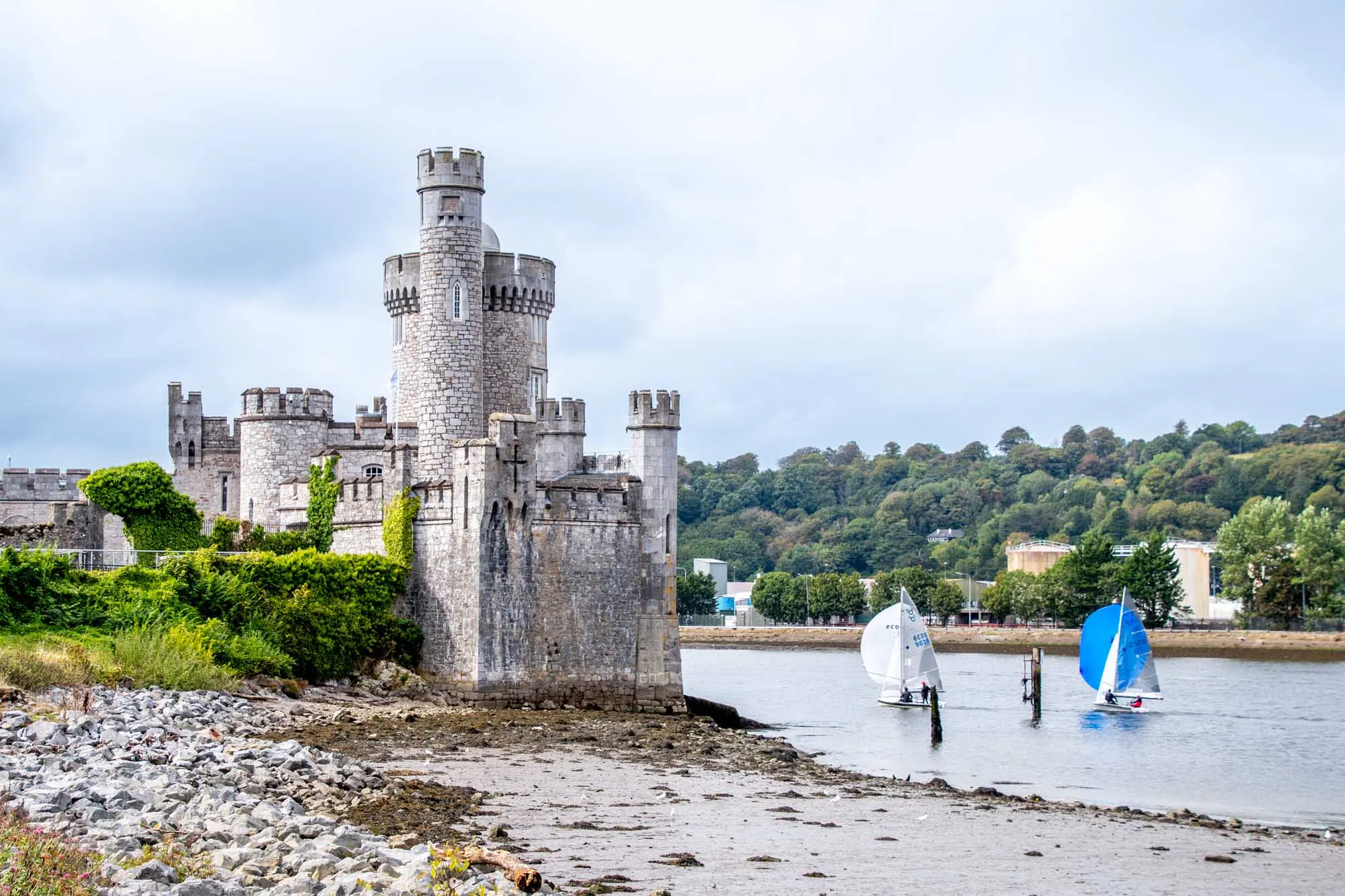
Overlooking the River Lee, the imposing Blackrock Castle has played many roles in its 450 years. The city’s oldest surviving structure, it is one of the most interesting places to go in Cork.
Over the centuries, Blackrock Castle has been a point of defense, an Admiralty Court, a lighthouse, and more. Today, visitors can explore its history on a half-hour tour to learn about the building’s different incarnations and see areas only accessible with a guide.
The historic structure is also home to an award-winning science center where visitors can learn about astronomy. They can discover how the universe began, explore the night sky with a resident astronomer, see interactive exhibits, and learn about Ireland’s connection to space.
The Castle Café, which sits alongside the observatory, is a great place to stop for brunch, lunch, or dinner whether you’re visiting the observatory or otherwise enjoying the area. We were impressed by the flatbread, mussels, and fish and chips that went well beyond standard museum cafe fare.
See the view from Bell’s Field
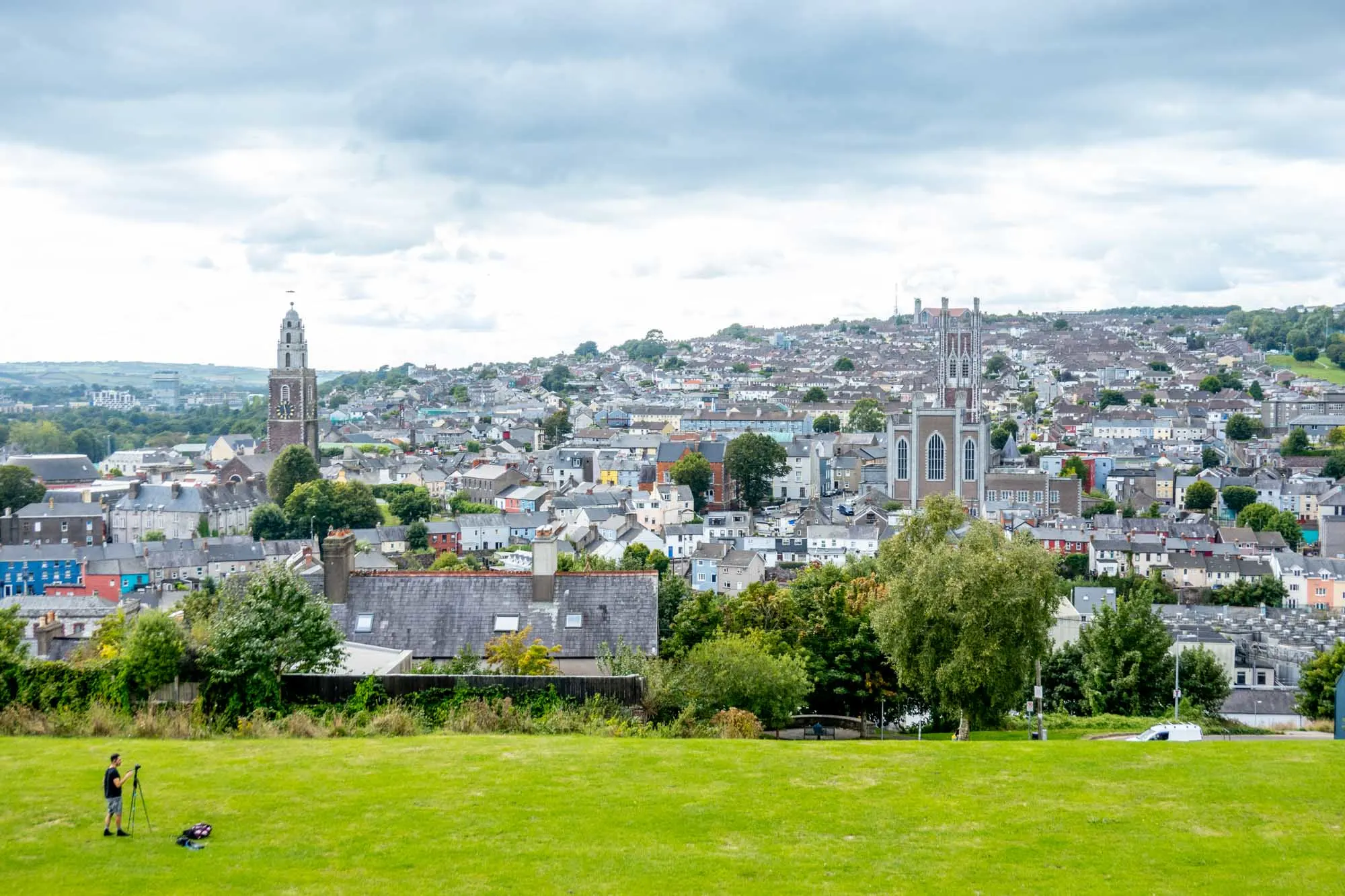
One of the best views is from Bell’s Field. This small park on top of Patrick’s Hill overlooks the north side of the city. From the grassy perch, you can pick out some of the top sites in Cork from the Shandon Bells tower to the spires of the Cathedral of St. Mary and St. Ann to the distinctive circular roof of the Firkin Crane theater.
Noted as a filming location for the popular movie and TV series Young Offenders, the park is a top place to go at sunset or simply to enjoy nice weather.
Make your own street art tour
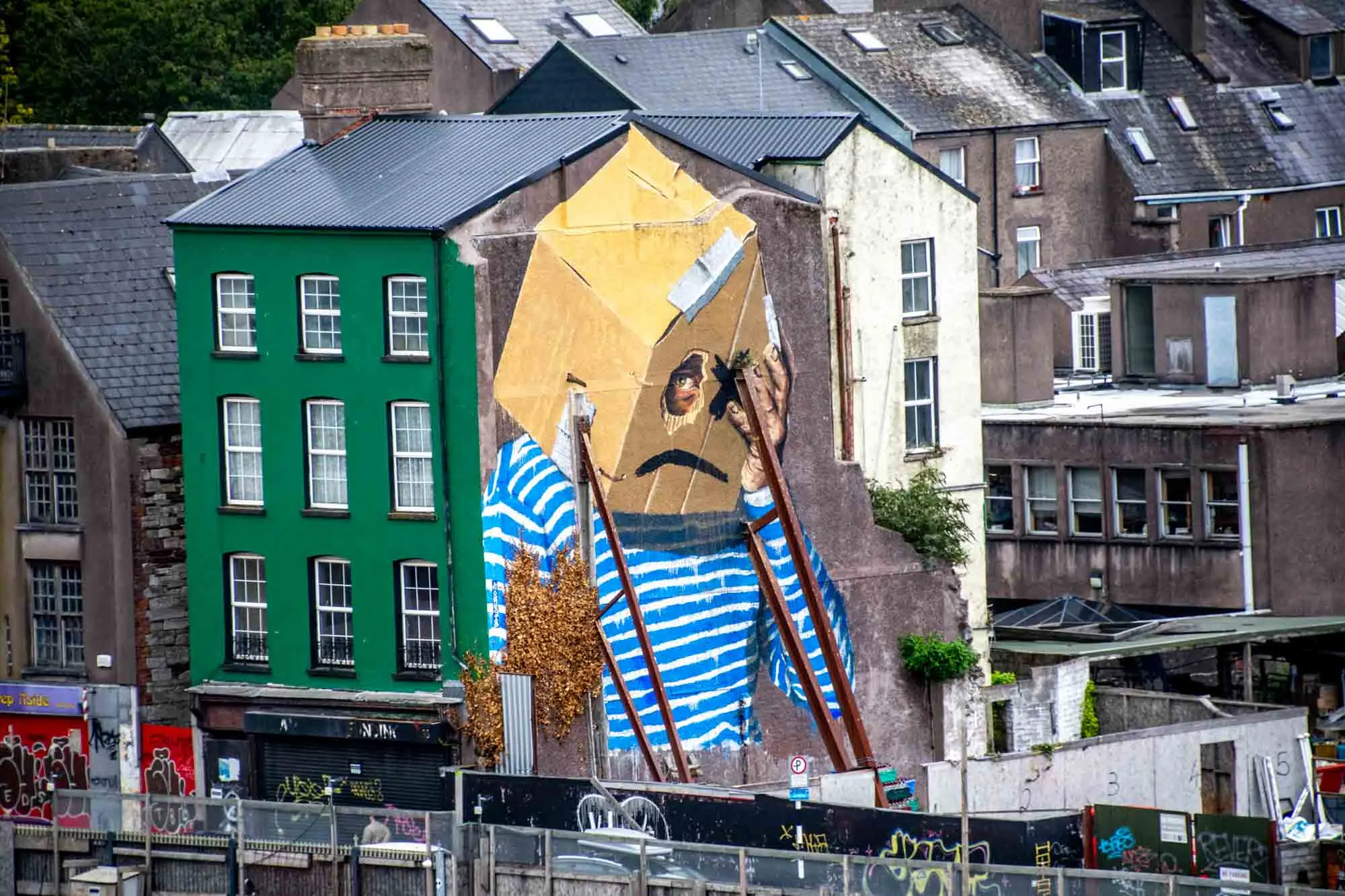
The city has a thriving street art scene with murals and artworks all over town. There are informal pieces done by local artists as well as large scale murals painted through city-sponsored programs.
As you walk around, keep an eye out for the more than 20 traffic box murals with different themes and the wall-sized street art commissioned by Ardú, a street art initiative designed to add color and inspirational work to Cork’s buildings. Check out the map and walking tour suggestions to find some of the major murals.
See St. Fin Barre’s Cathedral
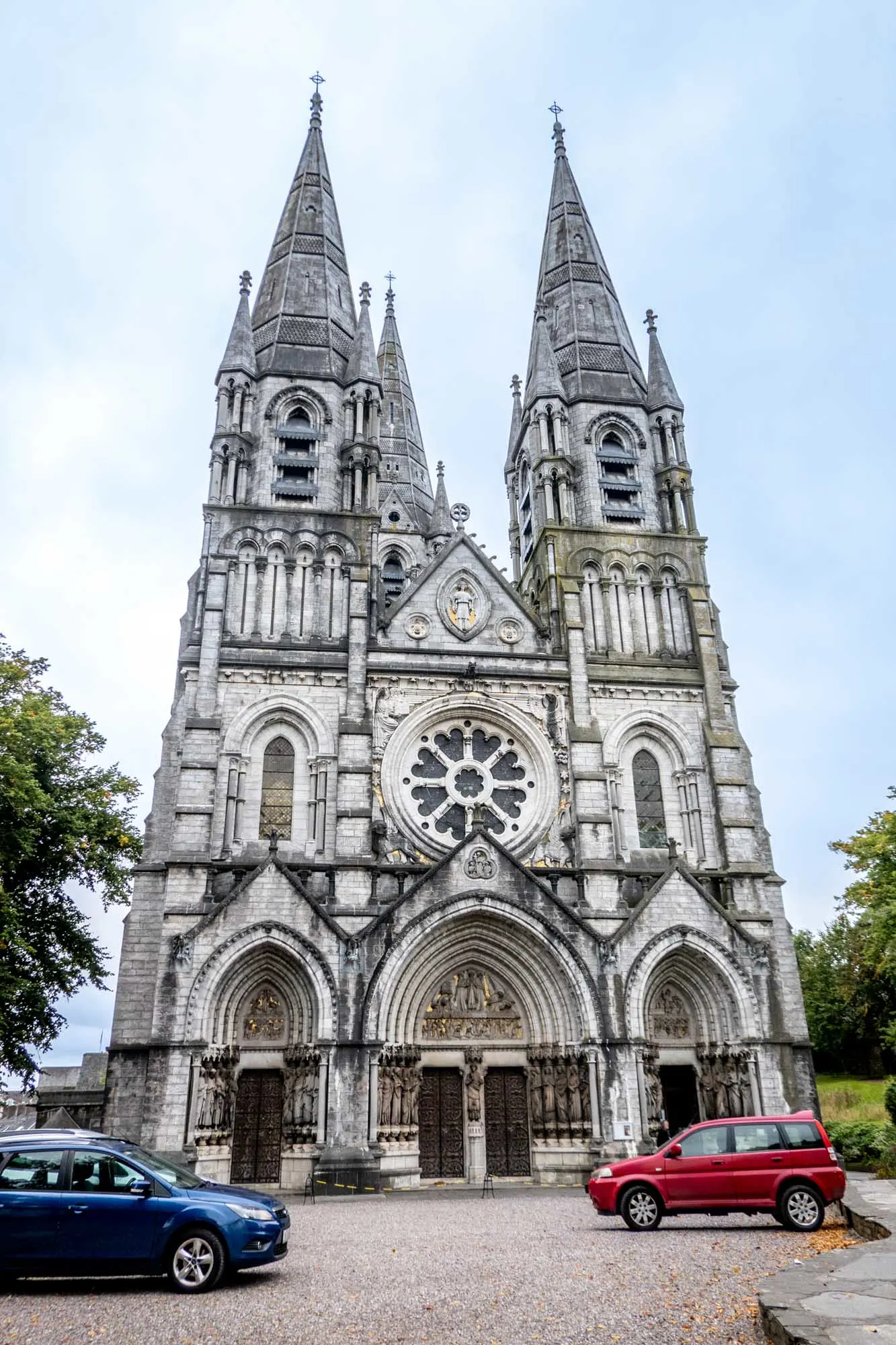
The three spires of St. Fin Barre’s Cathedral make the Gothic Revival building one of the most recognizable places to see in Cork. With its ornamental carvings and Resurrection Angel statue, this Anglican church is worth a visit.
Though the current cathedral dates from the 1870s, the ground it sits on has been a place of worship since the 7th century. Step inside to see the organ with its 4500 pipes and the 74 stained glass windows that line the nave.
Shop along St. Patrick’s Street
If you’re looking for a break from the historic sites and attractions, head to St. Patrick’s Street for a little retail therapy. Curving from Saint Patrick’s Bridge to Grand Parade, the road is the prime shopping street in southern Ireland. Many of the buildings here that date from the 1800s are now occupied by retailers like Brown Thomas, Dunnes Stores, and The North Face.
Walk the walls of Elizabeth Fort
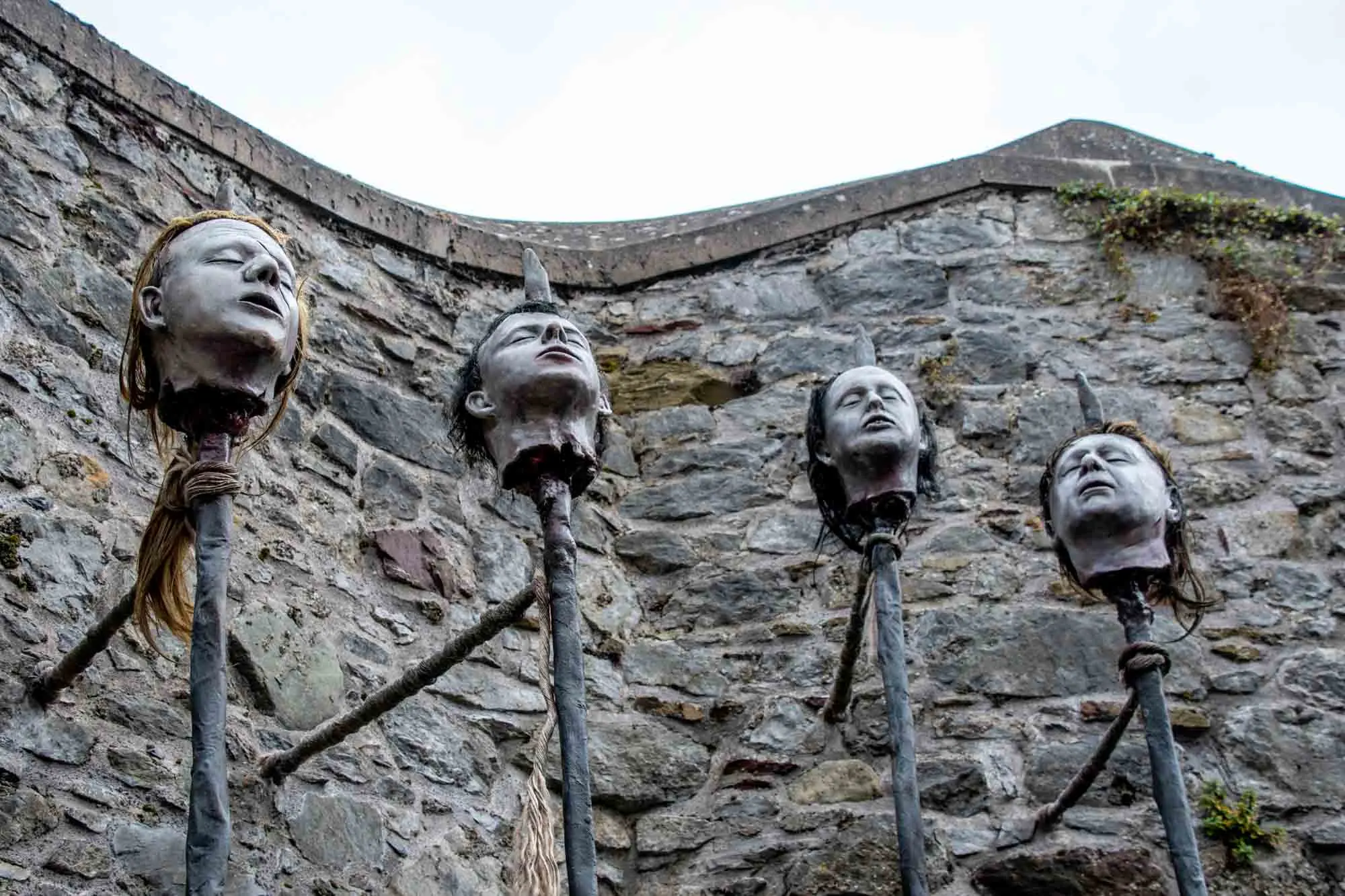
A stone’s throw from St. Fin Barre’s Cathedral, Elizabeth Fort is one of the most historic structures in the city. When it was first built in 1601, the fort was designed as an additional point of defense outside the medieval city walls. Just 23 years later, it was rebuilt and strengthened, and much of that structure survives today.
At various points in its history, Elizabeth Fort was an army barracks, a holding point for prisoners being sent to Australia, a food depot during the Great Famine, and a base used by the British to fight the Irish Republican Army. Until 2013, it was a police station.
Visitors today can walk the 400-year-old walls and appreciate the fort’s historic value. Information panels throughout the structure describe its evolution and importance at different times in its history. Admission is free, and there are great views from the walls, so it is worth a brief stop on your visit to Cork.
Enjoy the arts at Triskel Christchurch
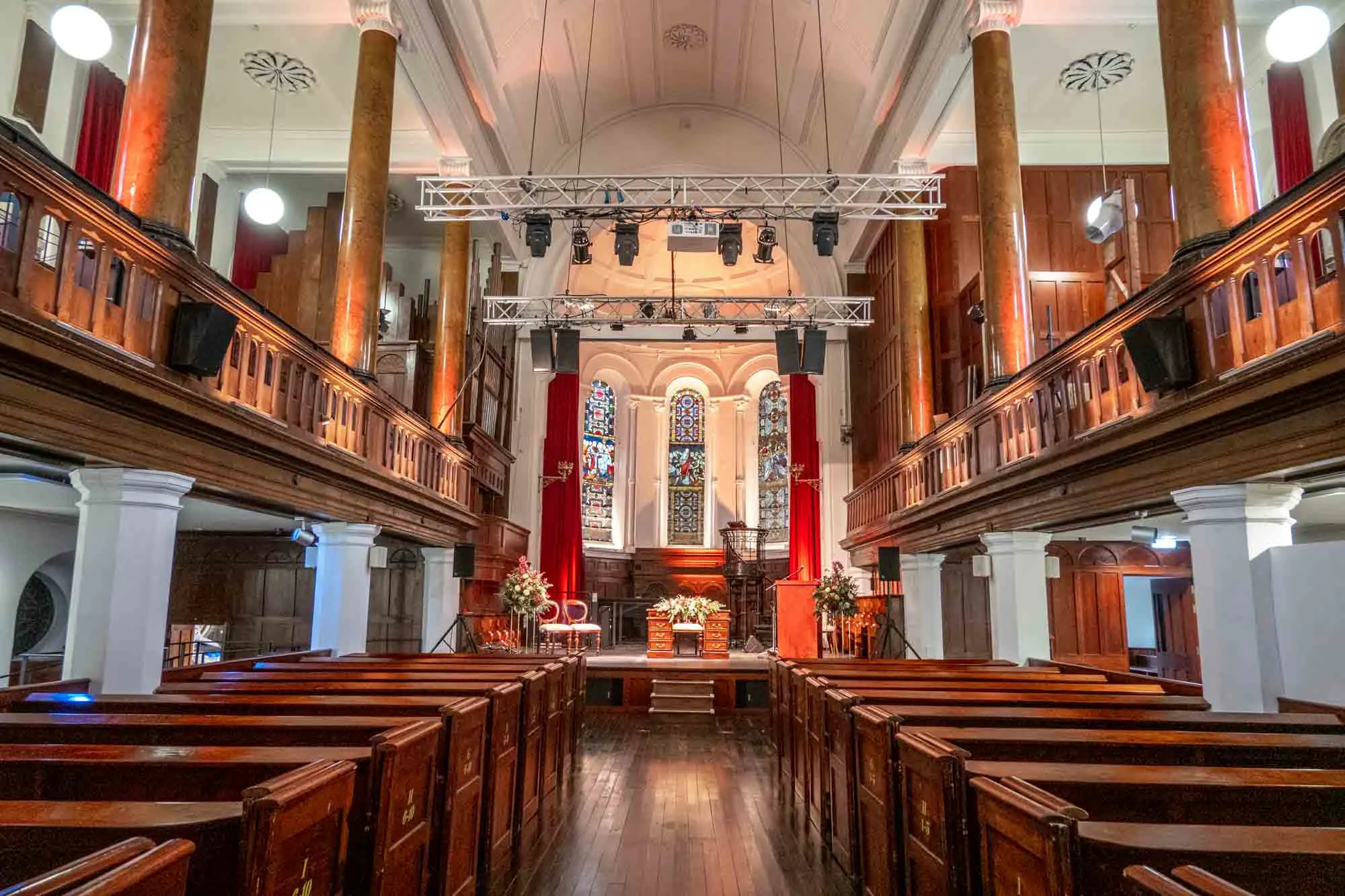
In a country packed with historic churches, it’s possible that none is more unique than Triskel Christchurch. This building, which was the main church of Cork city in the 17th century, is now a busy cultural venue.
The history of this place is long—it stretches back around 1000 years and includes at least two previous churches. If you take the time to explore the building, you’ll find a crypt and several headstones, including one from the 1500s. Some church features remain from the 18th and 19th centuries, including the pulpit, organ, and plenty of stained glass. They’re all featured on a handy visitors’ map.
But the real reason people visit this de-consecrated Georgian Church are the events. Several nights a week, you’ll find concerts, poetry, book readings, and movies in the former sanctuary. From jazz quartets to art exhibitions, there’s a little bit of everything here. Check out the calendar to see what’s on when you’re in town. Attending an event here is one of the more interesting things to do in Cork city.
Visit Blarney Castle
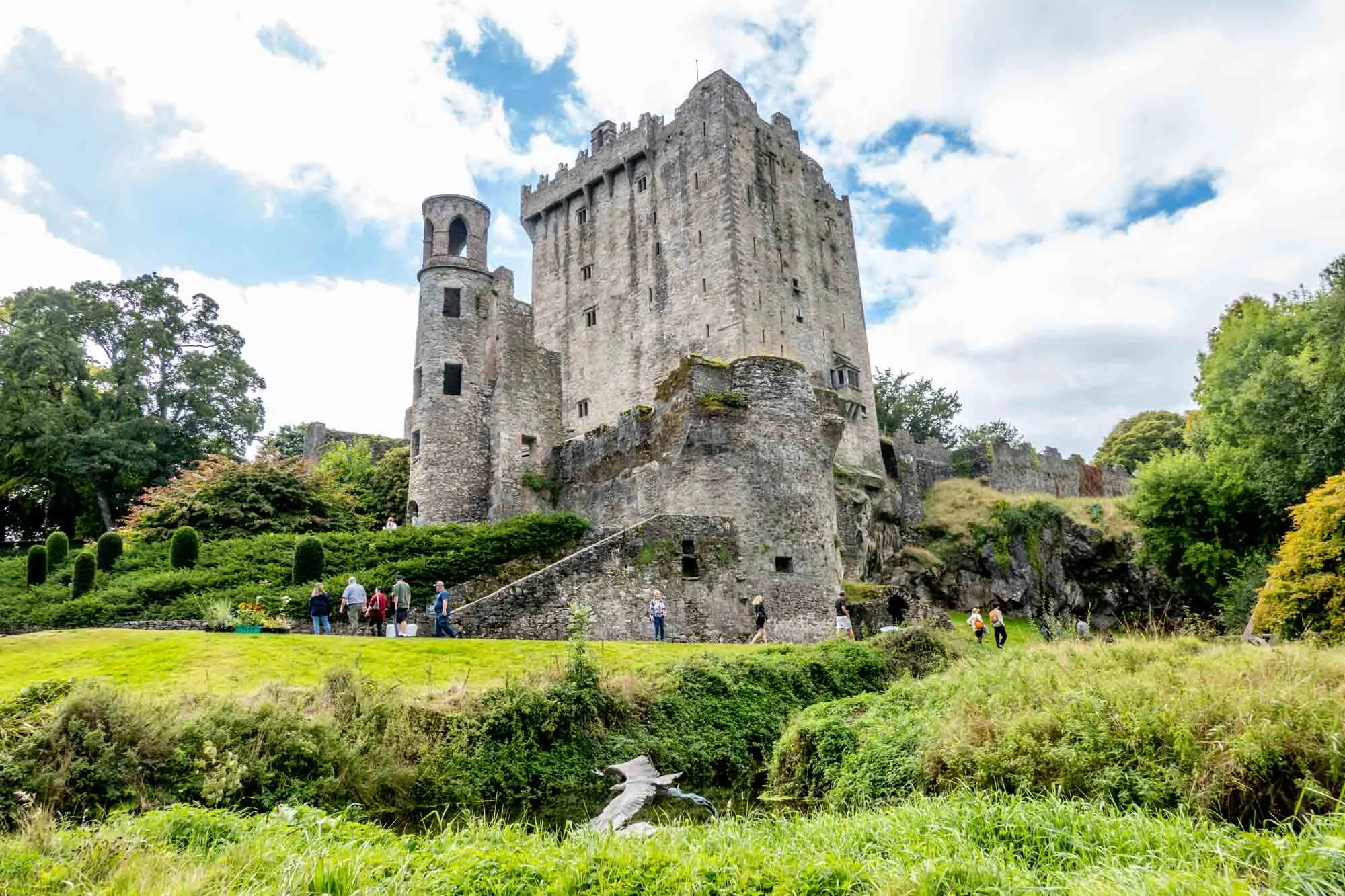
Even if you’ve never heard of Blarney Castle, you probably know about its famous stone. According to legend, those daring enough the kiss the Blarney Stone become eloquent and get the Irish “gift of the gab.” Kissing the stone requires lying down and bending backwards over the castle wall (with assistance), so it’s certainly not for everyone. Fortunately, there’s more to the castle than just the stone.
There is lots to see on the grounds of the 600-year-old Blarney Castle. You can see the dungeons and interior of the castle as well as the exhibition rooms and Blarney House. Our favorite part was wandering some of the garden trails to see the landscaped and more natural areas of the estate and the sculptures scattered throughout.
See St. Colman’s Cathedral
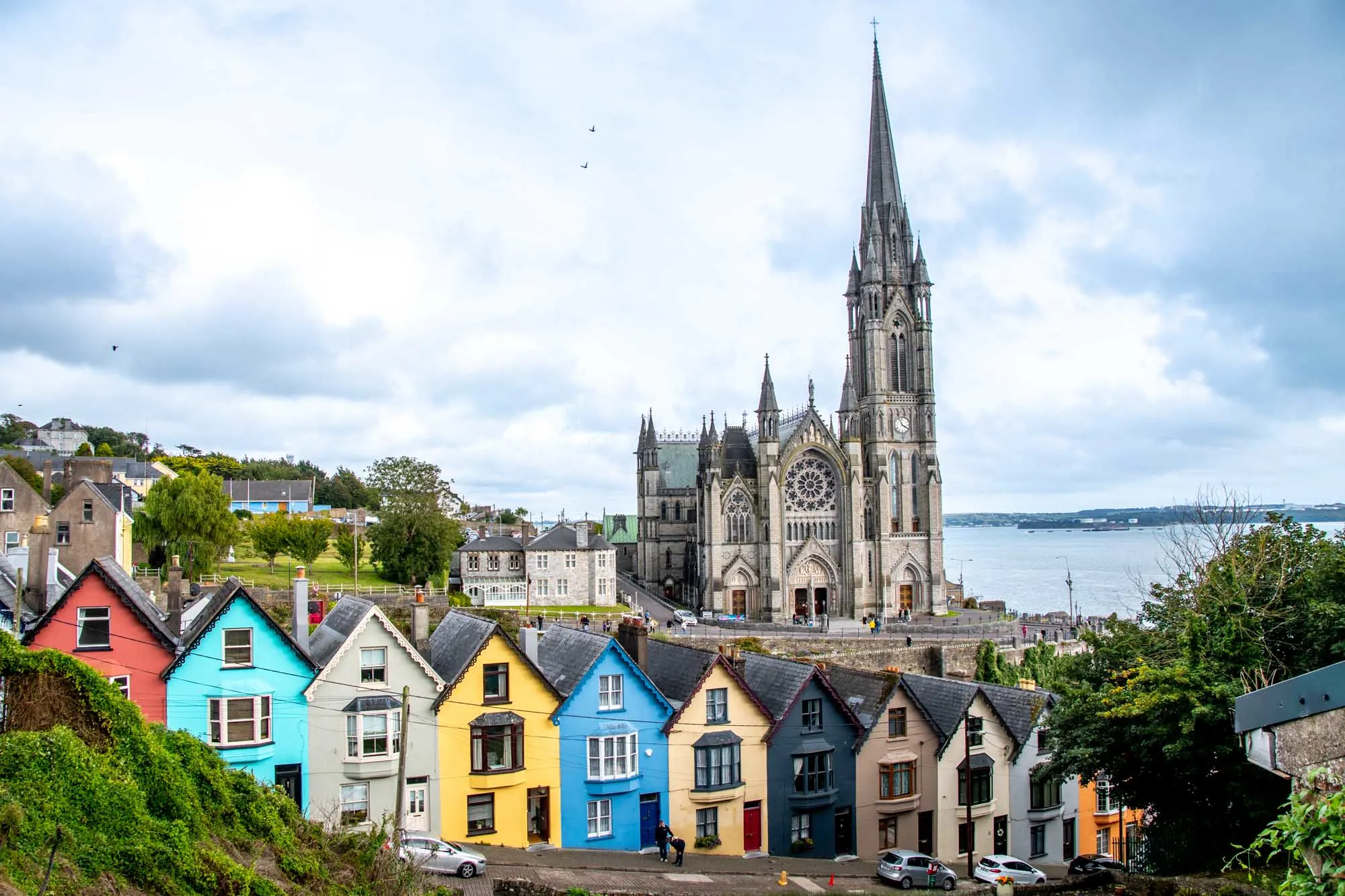
The delightful town of Cobh (pronounced “Cove”), which is just 25 minutes from Cork, is one of the top places to see in Ireland. St. Colman’s Cathedral—the massive building that dominates the town’s dramatic landscape—is worth a visit.
The 100-year-old cathedral is the tallest church in Ireland and can be seen throughout Cobh. Inside, the cathedral’s interior is decorated with carved arches and ornate stained glass, including two rose windows. Head over to West View Park to see the view of the cathedral towering over the colorful homes known as the Deck of Cards houses.
Visit Spike Island
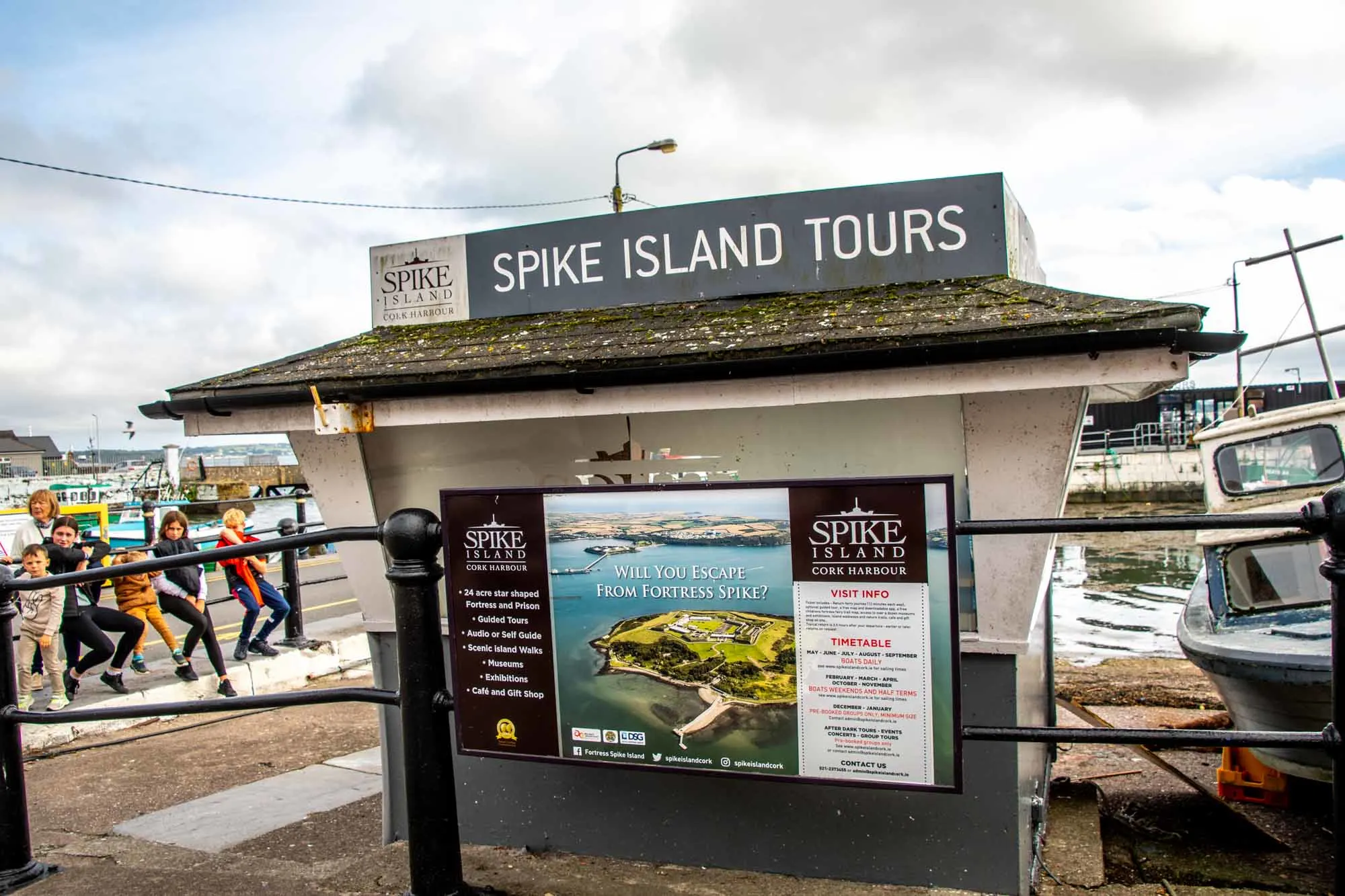
Spike Island sits right off the coast of Cobh in the middle of Cork harbor and is easy to reach on a short ferry ride.
The island’s story goes back to at least the 600s when a monastery was built here and continues through 2004 when the last prison was closed. In the intervening time, it was a defensive location during multiple wars and the home of several notorious prisons and prisoner depots stretching back to the days of Oliver Cromwell.
A visit to Spike Island today centers around the 24-acre Fort Mitchel that was built beginning in 1804. It contains buildings from different eras in the island’s history, including a cellblock from the 1850s and the more modern 1990s prison. There is also lots of artillery from the fort itself and exhibits about Ireland’s road to independence. The fort’s interior and much of the island is available for exploring by walking trails. It’s an intriguing place to spend a few hours.
Tour the Titanic Experience
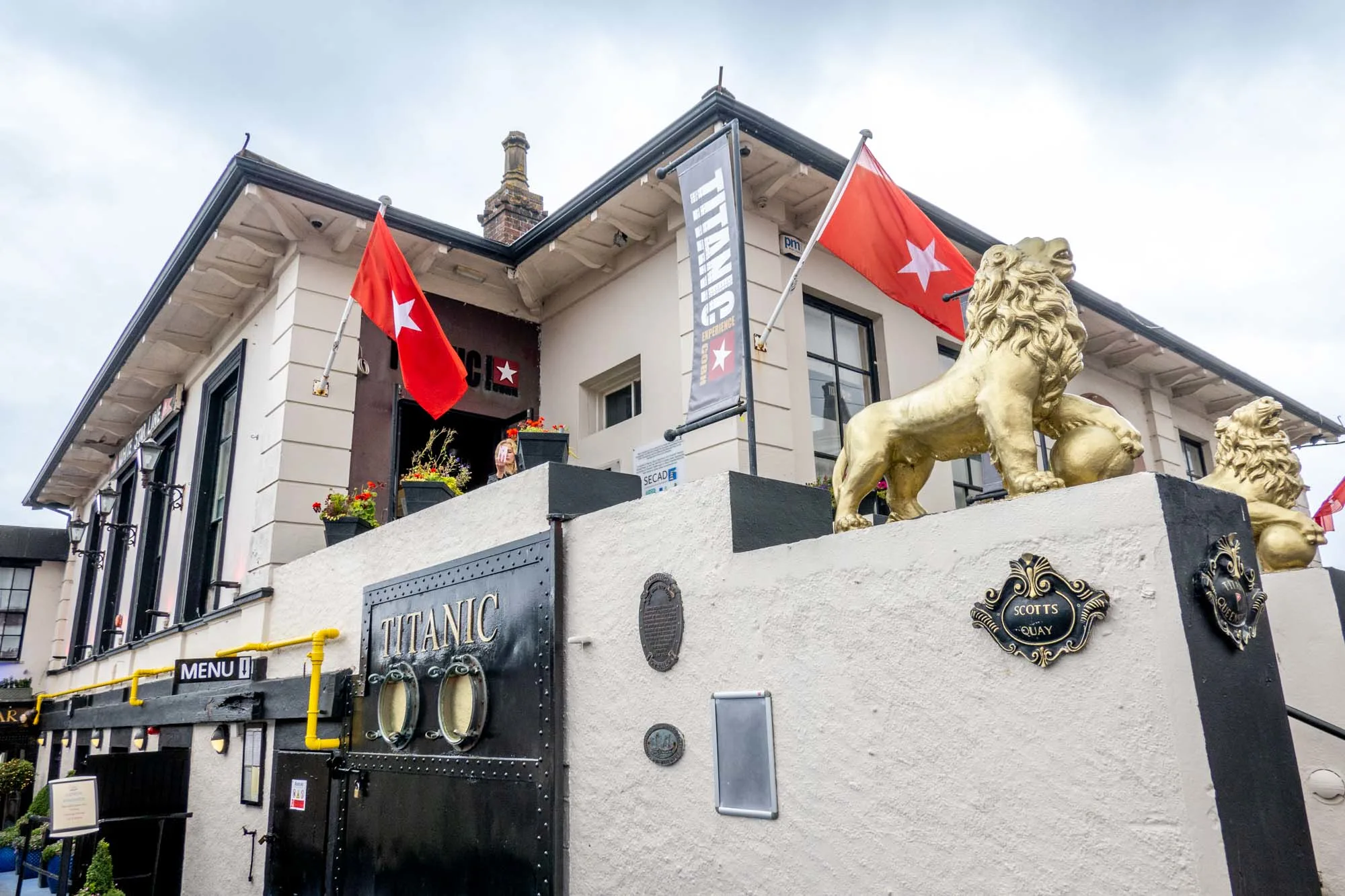
One of the most notorious seafaring disasters has strong ties to Cobh—the seaside town was the last port of call for the RMS Titanic before it sank in the North Atlantic. The Titanic Experience, which is located in the original White Star Line ticket office, follows the journey of the ill-fated ship and the stories of the 123 passengers who boarded here. Each visitor is assigned a passenger to follow and finds out their fate at the end of the tour.
Behind the museum, you can still see Heartbreak Pier, the name bestowed on the remains of the pier where Titanic passengers (and many others) left Ireland. Don’t miss the opportunity to see if before you leave.
Explore the Cobh Heritage Centre
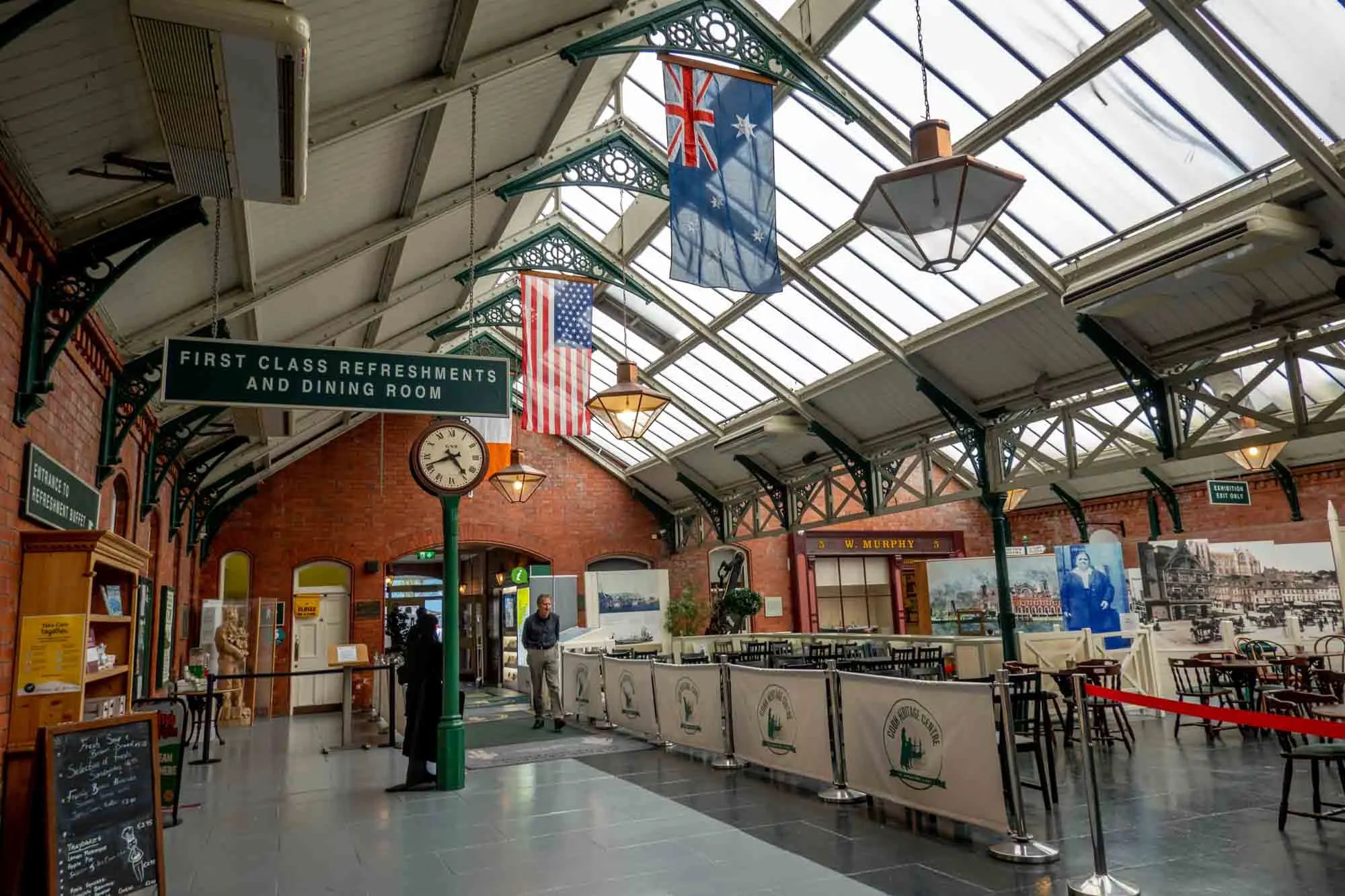
Over three million Irish citizens emigrated to other countries from the shores of Cobh. Located in a renovated Victorian railway station, the Cobh Heritage Centre tells the story of those who left in search of a better life, many of whom were fleeing the effects of the Great Famine.
One of the most famous emigrants is Annie Moore, who is memorialized in a sculpture outside of the Heritage Centre along with her two young brothers. She left Cobh in 1891 and became the first-ever emigrant to be processed on arrival at Ellis Island on January 1, 1892, where a similar statue honoring her is located.
If you’re interested in tracing your own Irish heritage, the centre has a genealogist who is available by appointment to help put the historical pieces together.
Find adventure and food in Kinsale
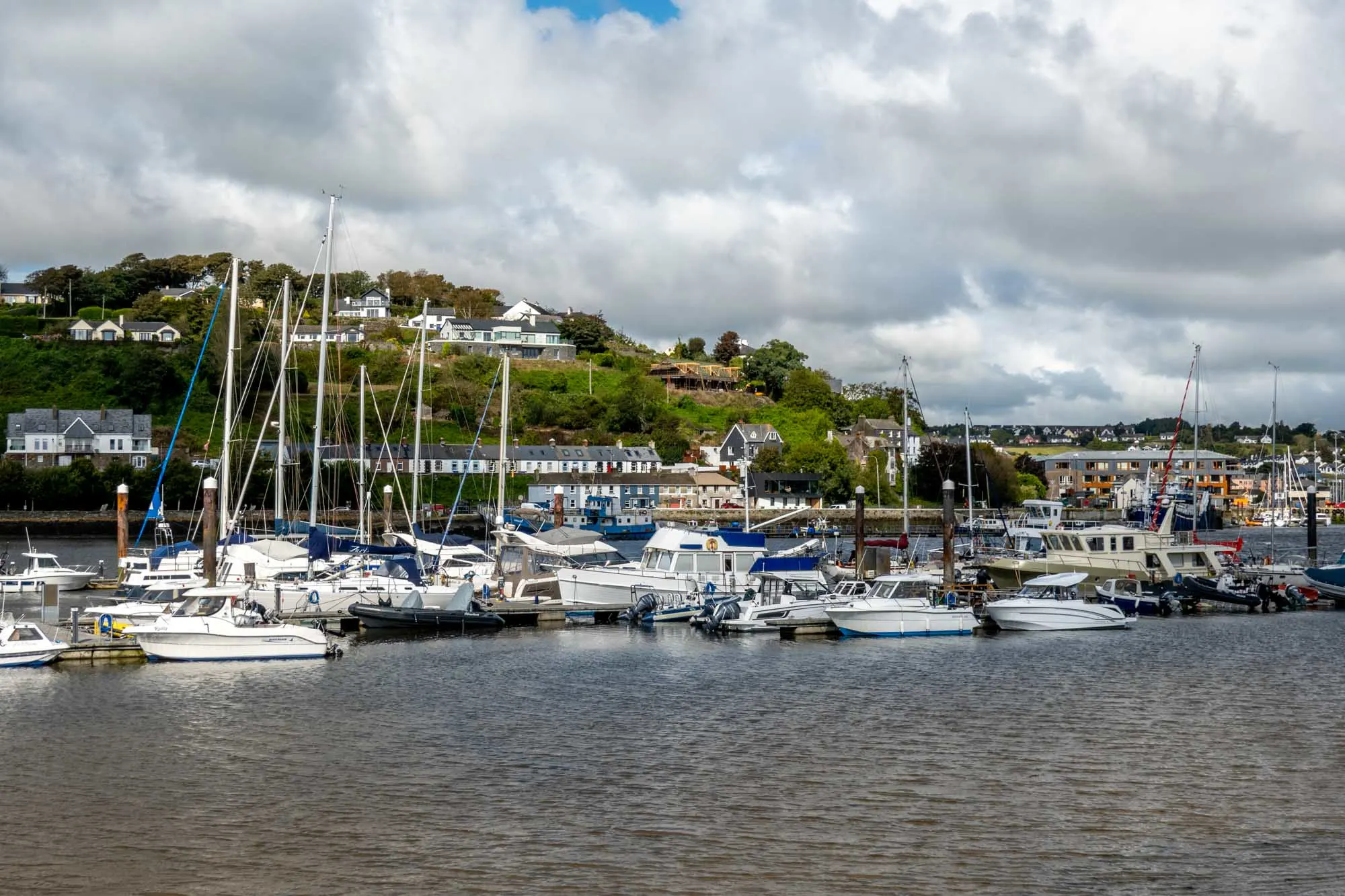
Less than 20 miles away, visiting the historic port village of Kinsale is a fun thing to do near Cork. The cute town greets visitors looking for great food and activities on the water. Its natural harbor brings lots of boats offering deep sea fishing and harbor cruises, and its broad beach makes a great spot for an afternoon of swimming, kayaking, and paddleboarding. There are lots of cafes, pubs, and seafood restaurants to choose from.
Spend a little time browsing the brightly colored shops and make a stop at Kinsale Mead Co., a family-run business with tastings and a tour. For a look at the history of the area, head to James Fort or Charles Fort, two 17th-century forts that protected the harbor for centuries.
Laura Longwell is an award-winning travel blogger and photographer. Since founding Travel Addicts in 2008, she has written hundreds of articles that help over 3 million people a year get the most out of their travel. In that time, she has visited nearly 60 countries on 5 continents, often returning to favorite destinations over and over again. She has a deep love of history, uncovering unexpected attractions, and trying all the good food a place has to offer.
In addition to Travel Addicts, Laura runs a site about her hometown of Philadelphia—Guide to Philly—which chronicles unique things to do and places to see around southeastern Pennsylvania. Her travel tips and advice appear across the web.
